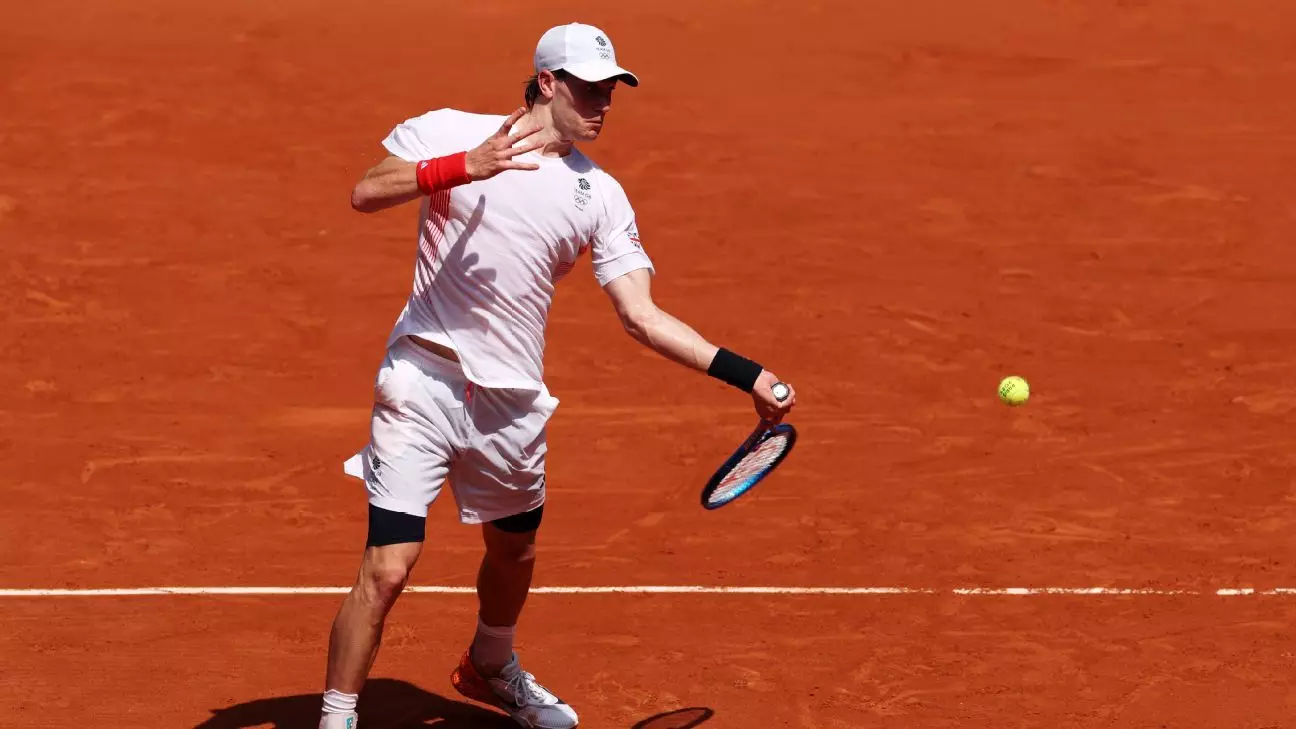Competing in high-intensity matches under scorching temperatures can be a daunting task for tennis players, as highlighted by Britain’s Jack Draper during his recent match against Taylor Fritz at the Paris Olympics. Draper expressed his frustration with the water bottles provided to players, emphasizing the difficulty of keeping them cold in the sweltering heat at Roland Garros.
Draper’s struggles with hydration became evident as he battled against Fritz, with the oppressive heat taking a toll on his performance. Despite putting up a fierce fight in the opening set, Draper eventually succumbed to the challenging conditions and suffered a defeat. The lack of access to cold water only added to the British player’s ordeal, making it harder for him to stay hydrated and maintain his stamina on the court.
Room for Improvement in the Hydration System
While Roland Garros offers courtside fridges for players to store pre-filled bottles and ice towels, Draper pointed out the limitations of the current system. According to him, the water bottles provided to players become uncomfortably warm during matches, consequently forcing them to drink lukewarm water in extreme conditions. This issue raises concerns about the effectiveness of the hydration setup at the tournament and its impact on players‘ performance.
Draper’s plea for a more efficient hydration system resonates with other athletes who have faced similar challenges in staying hydrated during matches. The International Tennis Federation (ITF) defended the existing protocol, stating that players could request ball kids to refill their bottles during breaks. However, Draper’s feedback sheds light on the need for a comprehensive solution to address the shortcomings of the current setup and ensure that players have access to cold water throughout the match.
Adapting to Extreme Heat in Tennis
While players like Fritz managed to cope with the demanding conditions at the Paris Olympics, the consensus among athletes is that more can be done to enhance the hydration facilities on the court. Fritz acknowledged the scarcity of cold water during matches, acknowledging the difficulty of finding a refreshing drink amidst the scorching heat. The implementation of extreme heat protocols by the ITF further underscores the significance of proper hydration in maintaining players‘ health and performance on the court.
The challenges faced by tennis players like Jack Draper highlight the critical importance of proper hydration in competitive sports. As athletes continue to push their limits in challenging environments, the need for effective hydration solutions becomes paramount to ensure their well-being and success on the court. By addressing the concerns raised by players and enhancing the existing facilities, tournament organizers can contribute to a safer and more conducive playing environment for all competitors.


Napsat komentář